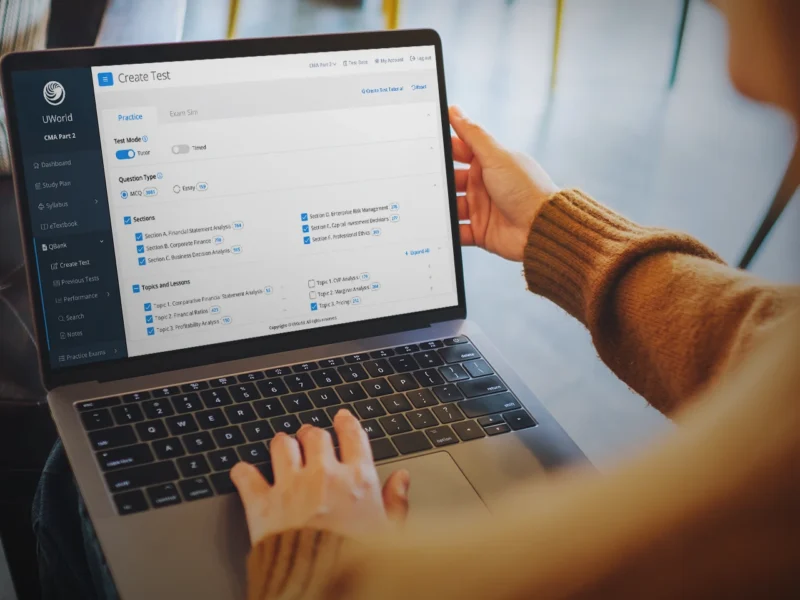Introduction
The Colorado Measures of Academic Success (CMAS) is one of the most important standardized assessments for students in Colorado. Whether you’re a student looking to boost your confidence, a parent eager to support your child, or a teacher aiming to guide your class, CMAS practice tests play a crucial role in preparation. Think of them as a rehearsal before the big show—practice makes performance smoother and stress-free.
Understanding the CMAS Exam
CMAS assesses students in core academic subjects including Math, English Language Arts (ELA), and Science. The test is designed not only to measure knowledge but also to evaluate critical thinking, problem-solving, and reasoning skills.
- Subjects Covered: Math, English Language Arts, and Science (with Social Studies in select years).
- Format: A mix of multiple-choice questions, constructed responses, and performance tasks.
- Grade Levels: Administered primarily in grades 3–8, with certain subjects tested in high school.
Benefits of Taking CMAS Practice Tests
Why should students bother with practice tests? Here’s why:
- Familiarity with the format: No surprises on test day.
- Reduced anxiety: Practice builds confidence.
- Time management: Students learn to pace themselves.
- Identify strengths and weaknesses: Spot problem areas early.
Types of CMAS Practice Tests
There are different versions of CMAS practice materials available:
- Online Practice Tests: Interactive and timed, similar to real exams.
- Printable Worksheets: Perfect for offline practice.
- Adaptive Digital Tests: Adjust difficulty based on performance.
- Teacher-Made Tests: Tailored to classroom learning.
How to Prepare Effectively for CMAS
Preparation isn’t just about studying harder; it’s about studying smarter.
- Create a study plan: Break subjects into smaller chunks.
- Use practice tests wisely: Take them regularly to monitor progress.
- Review mistakes carefully: Understand why the answer was wrong.
- Set realistic goals: Improvement comes step by step.
Subject-Wise Breakdown of CMAS Practice
Math Practice
Math sections test problem-solving, number sense, geometry, and algebra. Practice tests often include multiple-choice and word problems. Focus on solving questions step-by-step rather than guessing.
English Language Arts (ELA) Practice
This section emphasizes reading comprehension and writing skills. Practice tests include reading passages, answering comprehension questions, and writing essays. Regular reading practice is key.
Science Practice
Students are tested on scientific reasoning, interpreting data, and understanding experiments. Practice often includes analyzing charts, graphs, and short research scenarios.

Top Resources for CMAS Practice Tests
Some of the best places to find practice tests include:
- Official state resources with sample tests.
- Free online platforms that simulate the CMAS environment.
- Study guide books for detailed explanations.
- Learning apps for practice on the go.
Tips for Parents Helping Students Prepare
Parents play a huge role in exam readiness. Here’s how:
- Create a quiet study space.
- Encourage consistency rather than cramming.
- Offer positive feedback.
- Balance work and play.
Common Mistakes Students Make During CMAS Practice
Some pitfalls to avoid include:
- Rushing without reading carefully.
- Skipping review of wrong answers.
- Cramming instead of consistent practice.
- Forgetting to simulate real test timing.
Effective Test-Taking Strategies
On test day, smart strategies matter:
- Manage your time: Don’t spend too long on one question.
- Eliminate wrong options: Narrow down multiple-choice answers.
- Tackle easy questions first: Build confidence.
- Stay calm: A clear mind solves problems better.
How to Use CMAS Practice Results
Practice test scores are more than just numbers; they’re roadmaps.
- Track your progress over time.
- Adjust your study plan accordingly.
- Celebrate small wins to stay motivated.
- Ask teachers for extra help if needed.
Success Stories of Students Who Used CMAS Practice Tests
Many students have seen dramatic improvement through regular practice. From raising math scores by 20% to mastering essay writing, these stories prove that practice truly pays off.
Conclusion
The CMAS isn’t just about answering questions—it’s about demonstrating skills. With consistent use of CMAS practice tests, students can reduce stress, gain confidence, and significantly improve performance. Remember, practice doesn’t make perfect—it makes progress.
FAQs
Q1: How many CMAS practice tests should I take?
At least 3–5 full-length practice tests before the exam is ideal.
Q2: Are online CMAS practice tests reliable?
Yes, especially those from official state or trusted educational platforms.
Q3: How early should I start preparing for CMAS?
Starting 6–8 weeks before the test ensures enough time to practice effectively.
Q4: Do CMAS practice tests improve scores?
Absolutely! They help with confidence, time management, and accuracy.
Q5: Can parents help without knowing the subjects?
Yes, by creating a supportive study environment and encouraging regular practice.





